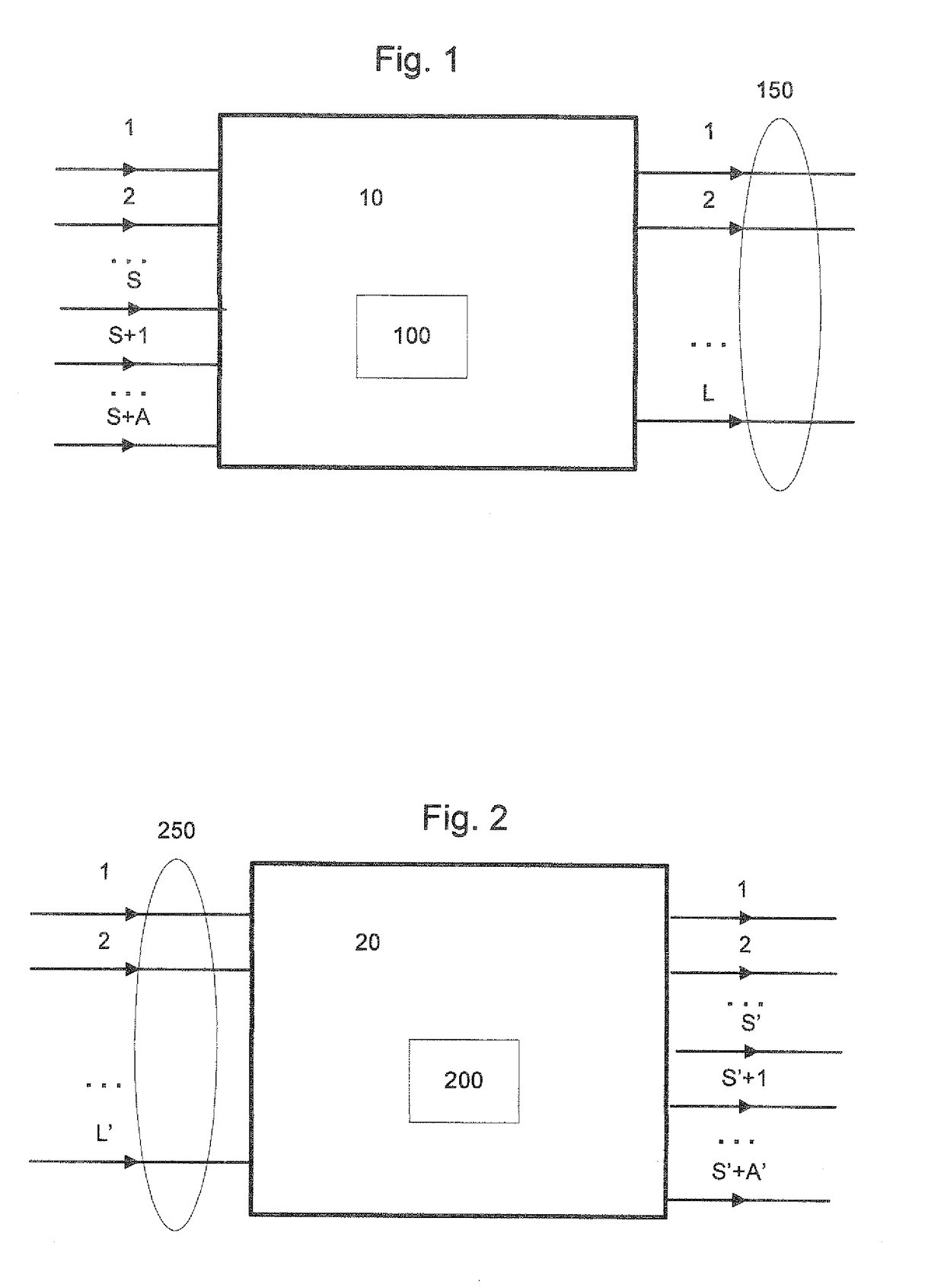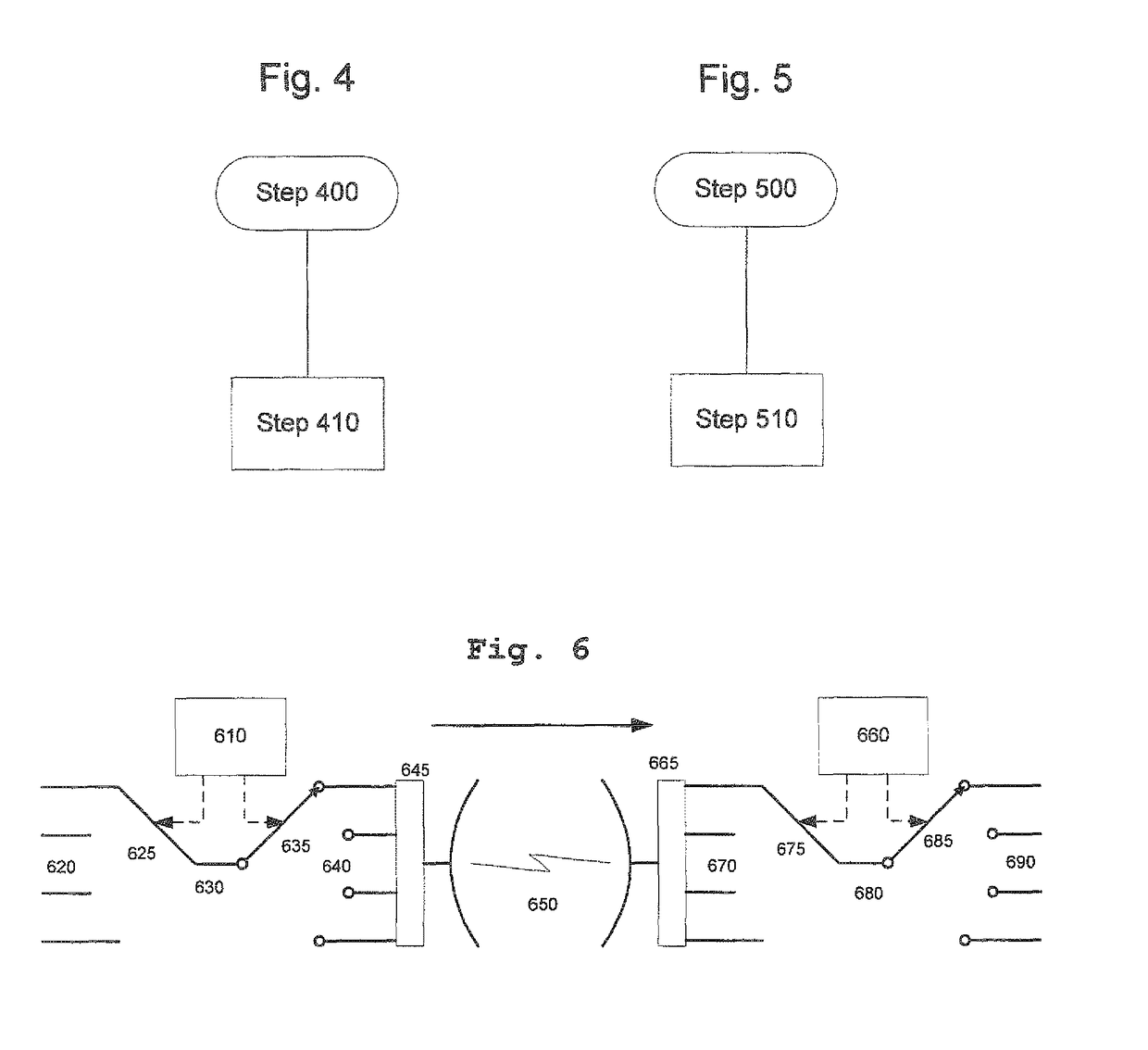Radio link aggregation
a radio link and aggregation technology, applied in the field of communication, can solve the problems of not being able to transmit higher data rates over a single radio link, requiring a much higher sampling rate than the bandwidth of user data, and not being able to design for such high bandwidth
- Summary
- Abstract
- Description
- Claims
- Application Information
AI Technical Summary
Benefits of technology
Problems solved by technology
Method used
Image
Examples
example a (
Low Rates Only for Explanation):
[0152]frame duration=1 ms[0153]byte scheduling
3 Links:[0154]Link payload rate A: 2 kbits / s[0155]Link payload rate B: 5 kbits / s[0156]Link payload rate C 1 kbits / s[0157] Aggregation Payload rate: 8 kbits / s
2 Services:[0158]Service rate A: 6 kbits / s[0159]Service rate B: 2 kbits / s (e.g. Idle)
[0160]When applying the above example A to the algorithm of FIGS. 13A and 13B, the following results are produced as summarized in the below table.
[0161]
Example A (Result): Service-Link-Mux TableIndexServiceIdLinkId112211312422512611712823
[0162]FIG. 14A shows the Service MUX table produced according to the algorithm of FIGS. 13A and 13B when applied to the example A illustrated above.
[0163]In particular, FIG. 14A illustrates steps for generating the Service-MUX table for Example A, with the following initialisation parameters.
Initialisation:
[0164]M:=2; LwSFP:=8;[0165]LwCBR(1):=6; LwCBR(2):=2;[0166]cbr(1):=6; cbr(2):=2;[0167]I:=1; K:=1.
[0168]FIG. 14B shows the Link MUX ...
PUM
 Login to View More
Login to View More Abstract
Description
Claims
Application Information
 Login to View More
Login to View More - R&D
- Intellectual Property
- Life Sciences
- Materials
- Tech Scout
- Unparalleled Data Quality
- Higher Quality Content
- 60% Fewer Hallucinations
Browse by: Latest US Patents, China's latest patents, Technical Efficacy Thesaurus, Application Domain, Technology Topic, Popular Technical Reports.
© 2025 PatSnap. All rights reserved.Legal|Privacy policy|Modern Slavery Act Transparency Statement|Sitemap|About US| Contact US: help@patsnap.com



